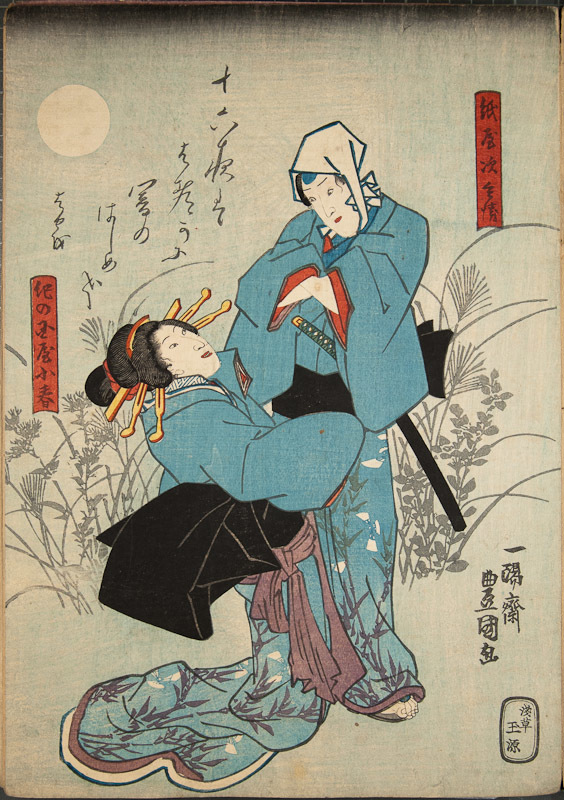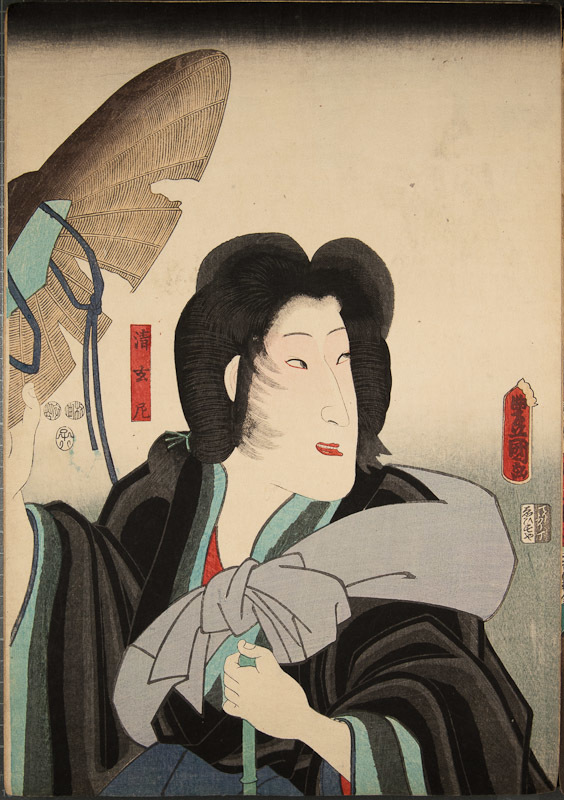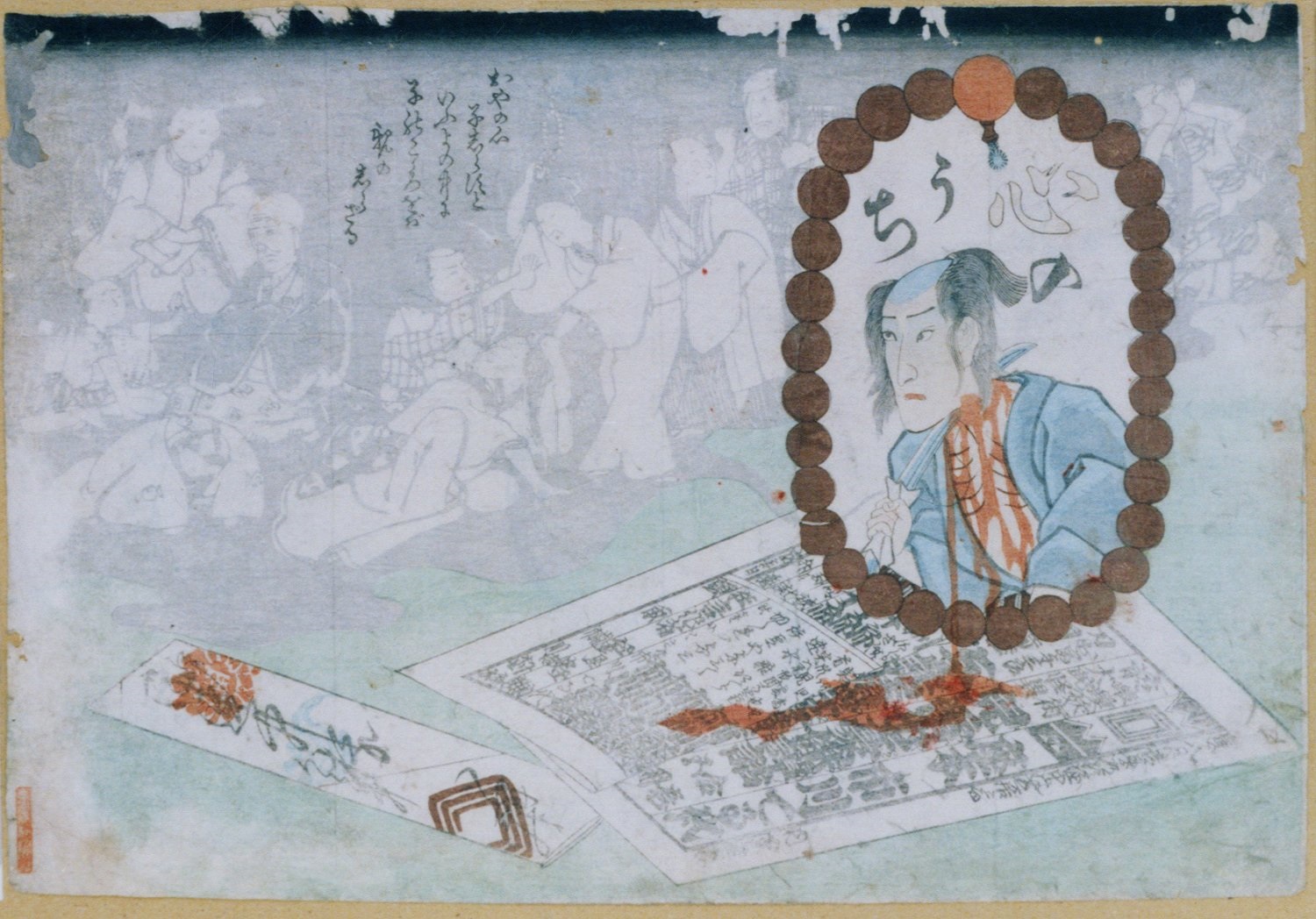Ichikawa Danjūrō VIII died single at the age of thirty-two. At an early aged he had already proved to have prodigious theatrical abilities, and his innate eccentricity and good looks were very suited to the decadent atmosphere of the mid-19th century. After leaving Edo and performing in Nagoya, he made his way to Osaka, where he suddenly committed suicide on the eve of the premiere.
This image was created using a woodblock used previously for another print, which belonged to a diptych where he appeared characterized as Kumagai, a famous soldier at the service of the Minamoto clan, particularly known for having killed the young warrior Taira no Atsumori in the battle of Ichi-no-tani (1184).
Bandō Shūka I, the onnagata with whom Ichikawa Danjūrō VIII had often performed died unexpectedly the following year, and in addition to shinie representing Shūka alone, many shiniewere printed depicting the two actors together.
This event resulted in the creation of a significant number of shinie. At the time, the figures given spoke of around two-hundred to six-hundred variants dedicated to the two actors.
“The Flames of Passion in the Heart” (Bonnō no mune no hi); actor Bandō Shūka I as the nun Seigen (Seigen-ni), from the series Collection of Exemplars of the Five Elements (Nazorae gogyô zukushi no uchi), by Utagawa Toyokuni III.
The woodblock for the previous print was reused for one of the shinie published after the death of actor Bandō Shūka I. The colourful sumptuousness of the garments was changed to blacks, greys, and blues, and the background was eliminated, but the censorship seals dating to 1852 were kept, the year when the woodblocks for the original print were carved. This is a good example of how the demise of an actor could be turned into a new business opportunity for the publishers.
The collection of the Ritsumeikan University collection has a version with a neutral blue background, where the grain of the woodblock is very visible, as well as two butterflies that were not present in the original print. As we have mentioned earlier, these butterflies are a reference to the wheel of existence.
In the print kept in the Complutense University the title has been moved, resulting in a strange composition. There seems to be something missing in the top right corner, which would have been the reason why the title would have been displaced.
Some designers ventured to represent the moment of Ichikawa Danjūrō VIII’s death, in circumstances often imagined.
Sometimes even taking advantage of the expressiveness of a bloodied hand printed on the paper, inviting us to think that it is the artist's own hand that has stained the engraving we are acquiring.
From a religious point of view, shinie engravings also remind us to pay attention to the deceased so that their spirit may rest in peace and bring blessings to those they leave behind.
The shinie make visible the admiration caused by kabuki actors in Edo society, but also warn about the transience of existence, and highlight their beliefs about the value of a job well done, the afterlife, and how one must pay attention to the deceased so that their spirit may rest in peace and bring blessings to those they leave behind.






